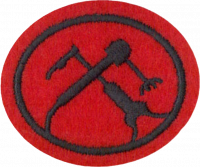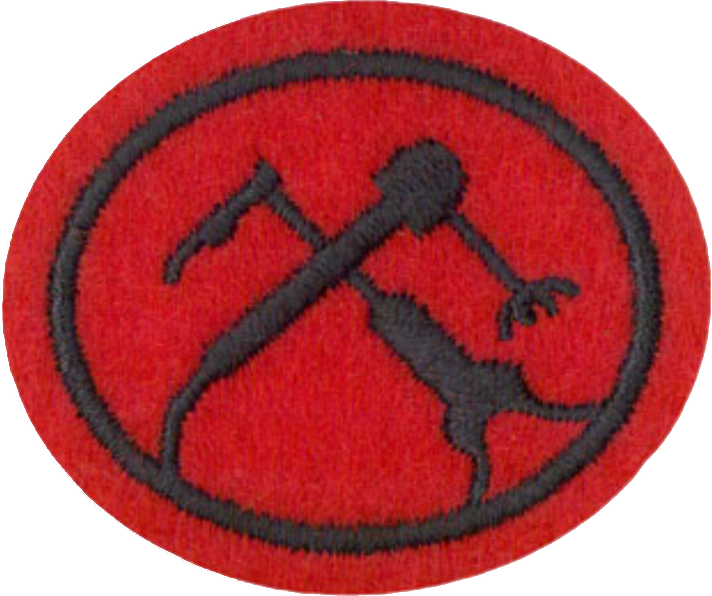Respuestas para la especialidad JA de Soldadura
1
1a
1b
The pressure regulators enable the user to reduce the high pressure contained in the cylinder to a usable working pressure. There are several handling and set up procedures that are important to the overall operation of the pressure regulator. The pressure regulator on each tank shows two things:
1c
1d
2
- Proper eye protection must be worn (shaded torch welding / cutting glasses)
- Proper non – flammable coveralls must be worn
- Remove butane lighters from pockets
- Put on proper eye protection and protective clothing
- Open the torch fuel valve no more than ½ turn
- Position the tip of the torch down and away from your body and hold the striker in your other hand so only the head of the striker is in front of the torch tip
Practice using the striker with the fuel shut off - Use the striker to light the torch
Never use a lighter, matches, or other burning material to light the torch - Adjust the torch fuel valve until the flame gives off little black smoke
- Slowly open the torch oxygen valve to create a neutral flame
Neutral flame: (equal amounts of oxy/acetylene) has a rounded white inner cone used for fusion welding steel.
Carburizing flame: (less oxygen) has a longer feathered blue inner cone a slightly carbonizing flame is used for brazing.
Oxidizing flame: (excessive oxygen) has a short pointed white inner cone used for special purposes such as brazing with bronze filler rod.
SHUTTING DOWN:
- Shut off the torch fuel valve first, which immediately extinguishes the flame
- Shut off the torch oxygen valve
- Close the acetylene cylinder valve
- Close the oxygen cylinder valve
- Bleed the acetylene line by opening the torch acetylene valve until the pressure reads zero on both the high and low pressure gauges
(If the torch will be left for more than a few minutes and then reused, both lines must be bled before lighting the torch again) - Turn the acetylene pressure regulating screw counter – clockwise all the way out
- Close the torch acetylene valve
- Bleed the oxygen line by opening the torch oxygen valve until the pressure reads zero on both the high and low pressure gauges
- Turn the oxygen pressure regulating screw counter – clockwise all the way out
- Close the torch oxygen valve
There will be no horseplay.
3
This requirement demonstrates one's skill in working in darkness, such as in an emergency. All acetylene connection threads are left-handed, while all oxygen connection threads are right-handed.
4
5
6
7
SAFETY EQUIPMENT
The correct safety equipment must be used when using the oxy acetylene equipment or electric welding.
- Wear shaded safety glasses
- Use gloves during torch operation and when handling hot metals
- Follow all safety rules for this and all other equipment
OXY-ACETYLENE SAFETY
- You must be trained and authorized before using the oxy-acetylene torch
- Make sure you do not have a lighter in your pocket – they can explode!
- Ensure gas bottles are upright and secure at all times
- Do not allow oil or grease to come in contact with hoses or equipment
- Perform all welding and cutting in the welding area – ventilation must be turned on
- Approved goggles and spark resistant clothing must be worn when using the oxy-acetylene torch
- Do not weld or cut a closed container
- Make sure the work area is clear
- Open the cylinder valves slowly – stand to the side!
- Light the torch with the striker – do not use a match or a lighter
- When welding, bend the end of the rod to identify the hot end and to prevent eye injury
- When finished turn off the torch valves, turn off cylinder valves, then go back to the torch and bleed both lines
- Keep the cylinder caps on when not in use
8
Oxy-acetylene welding uses two gases in the process of producing a weld. Acetylene, which is the fuel and is the main source of heat, and oxygen, which is a propellant.
Electric arc welding does not use gas to produce a weld like oxy-acetylene welding does. Electric arc welding uses an electric current to produce its welds. A clamp, with the one side of the current flowing through it, is attached to a base plate. Then the another clamp/nozzle, with the other side of the current flowing through it, is held in a hand. A filler rod is then used to complete the circuit and create the heat needed to heat the pieces of metal being joined and melt the filler rod (used to bind the pieces of metal together).
9
10
Nota
maquinaria que no se enganche en condiciones apropiadas, expuesta a la tensión de la tracción o el peso, son una invitación al desastre.
Nota: **Este requisito demuestra la habilidad de trabajar en la oscuridad, como en caso de emergencia. Todas las conexiones de acetileno son rosca invertida (a la izquierda), mientras que todas las conexiones de oxígeno son rosca normal (a la derecha).
References
- Steelworker, Volume 1, A U.S. Navy Training Manual. As an original document produced by the U.S. government, this publication is in the public domain and has a lot of information that should be incorporated into this text.


